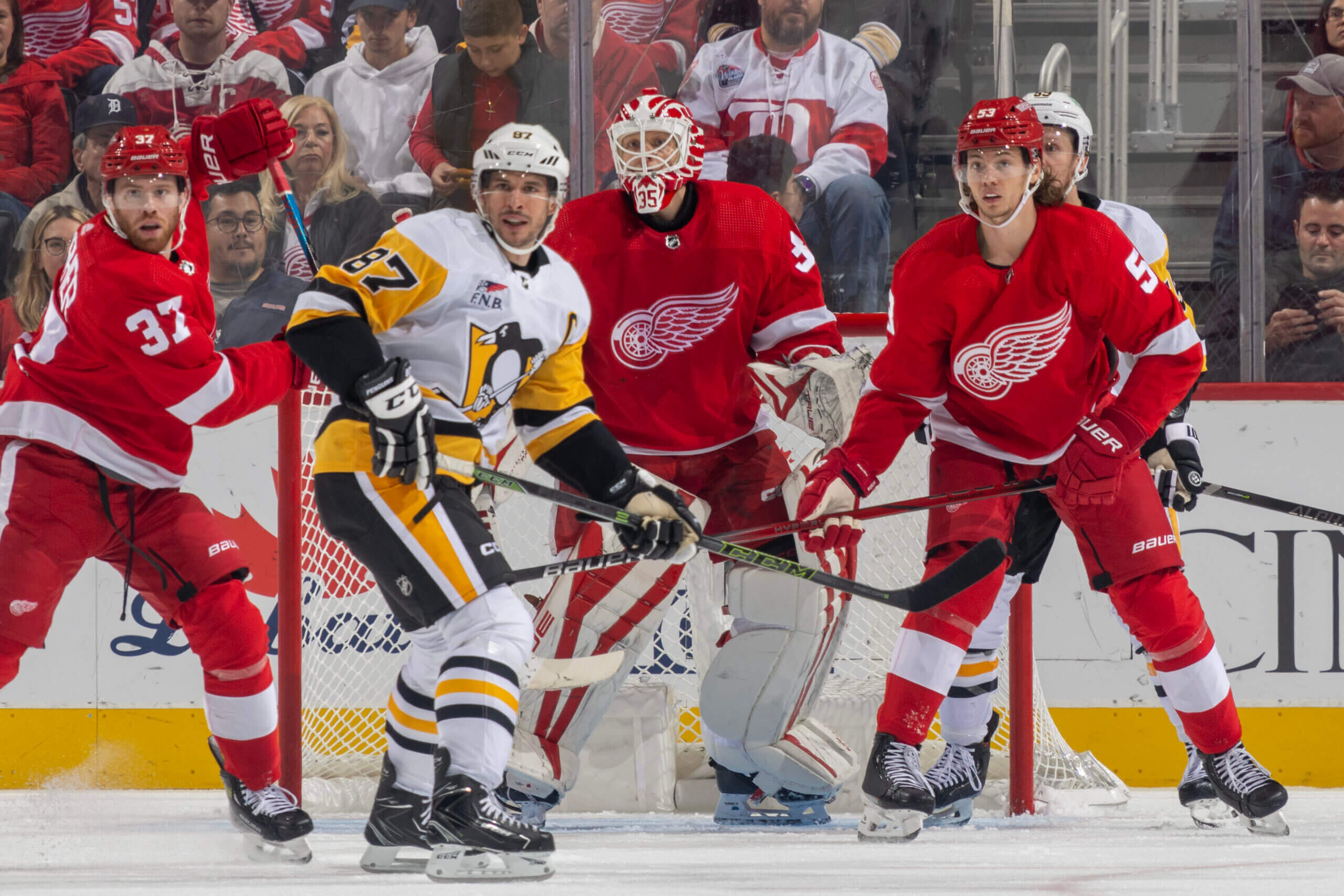
Stanley Cup Checklist: How each non-playoff team can become an Eastern Conference contender
What do the eight teams in the East who missed the playoffs need to work on in order to be contenders?
As the NHL postseason ramps up, the 16 teams that slipped out of the playoff picture can try to see how they stack up to the league’s best contenders from the sidelines.
While there is no single path to contention, championship-caliber teams in recent years tend to share a number of key ingredients.
• Elite first-line center that’s among the very best players in the world.
• Elite first-line winger to support the elite center.
• Two other top-line wingers on each of the top two lines.
• Top-line center to play behind the elite center.
• Two more top-six forwards for depth in the middle six.
• Elite No. 1 defenseman.
• A second No. 1 defenseman to play behind him.
• A top-pairing defenseman to help anchor a strong second pair with the No. 2.
• Another top-pairing caliber defender to crush soft minutes on the third pair.
• A top-10 caliber starting goaltender.
That’s the Stanley Cup Checklist. It was originally based on a decade of champions and has since been updated to include all winners from the 2010 Blackhawks to the 2023 Golden Knights.
The guideline for what a team should be striving for per position is the average Game Score Value Added (GSVA) of past champs, with a range that extends one standard deviation in each direction. The data is calculated two ways: Actual values solely based on the 2023-24 season on a per-82 game basis and projected value based on the last three seasons, weighed for recency and adjusted for age. Those three years are only from the NHL level, so if a player has less experience then those games are just emphasized more.
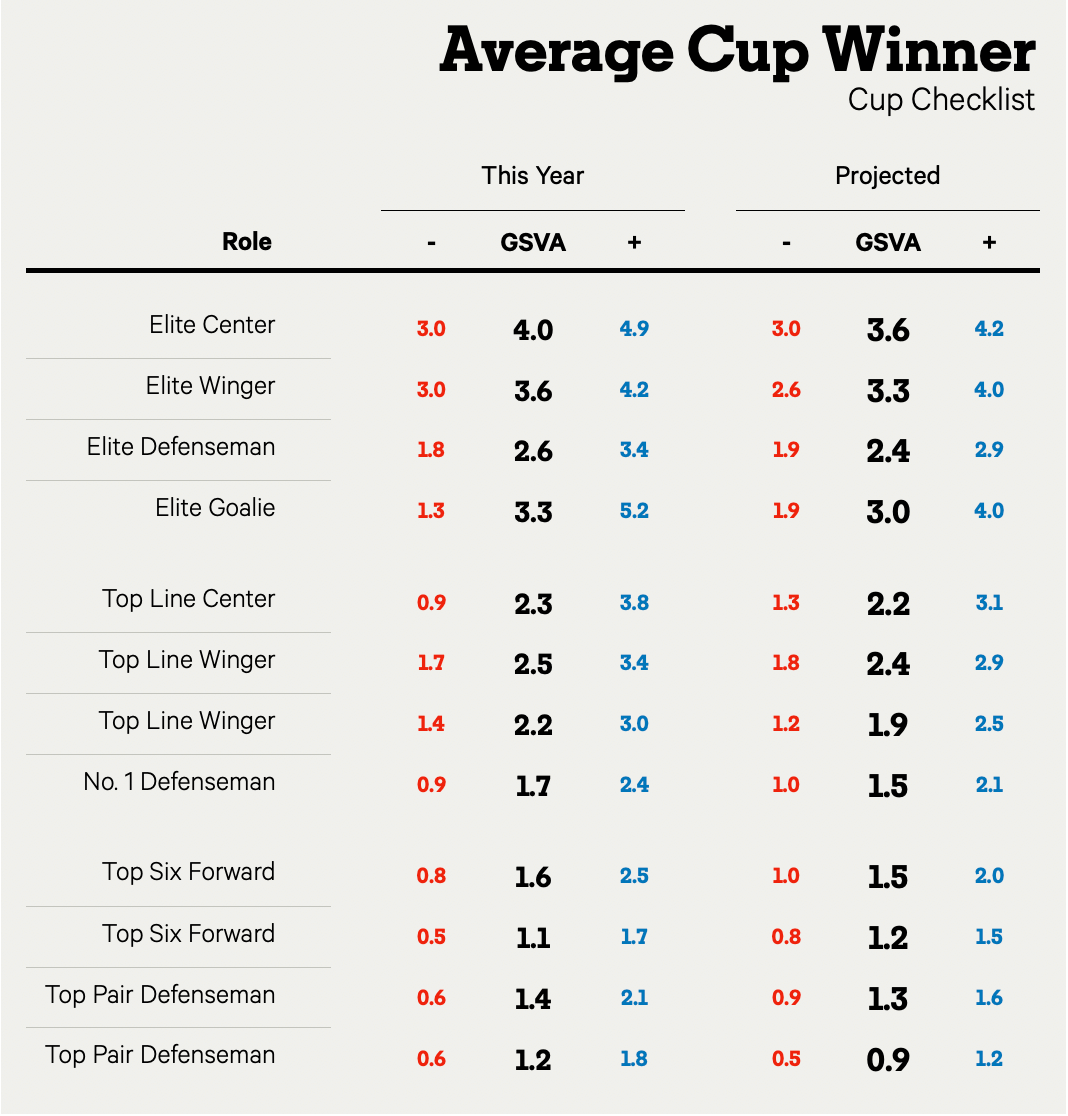
Sometimes a team doesn’t need to have gold checks across the board to succeed — pluses in one direction can make up for a weakness in another. Plus this doesn’t account for playing styles and other contextual factors. That’s why this isn’t the end-all-be-all for analysis — it just helps pinpoint areas of strength and those that lack.
After we looked at the eight Western Conference teams, our focus now shifts to the East.
Cup Checklist Legend
Red X: Falls below the range entirely
Grey checkmark: Passable, but below the average champion
Black checkmark: Above average relative to the average Cup winner
Gold checkmark: Exceeds the range entirely
Detroit Red Wings
The Red Wings showed real promise this year, but hit a wall down the stretch which is what ultimately held them out of the postseason by the slimmest of margins.Lucas Raymond looks like a prime breakout candidate, but there are some questions on the wing with Patrick Kane and David Perron both set to become free agents in July. Even if both stay, it wouldn’t hurt to punch up the group with another Alex DeBrincat-like move.
The blue line needs tweaking too — the Red Wings have personnel and may get more if Simon Edvinsson is ready for a full-time role. But no one else is cut out for defensive minutes, which buries Moritz Seider in some of the toughest minutes in the league.
Then back in goal, there’s the question of whether Ville Husso can be ready (and durable enough) next season. Alex Lyon was what Detroit needed most of the season, but crumbled under that workload at the worst time.
There’s potential in Detroit, but there’s clearly still work to do.
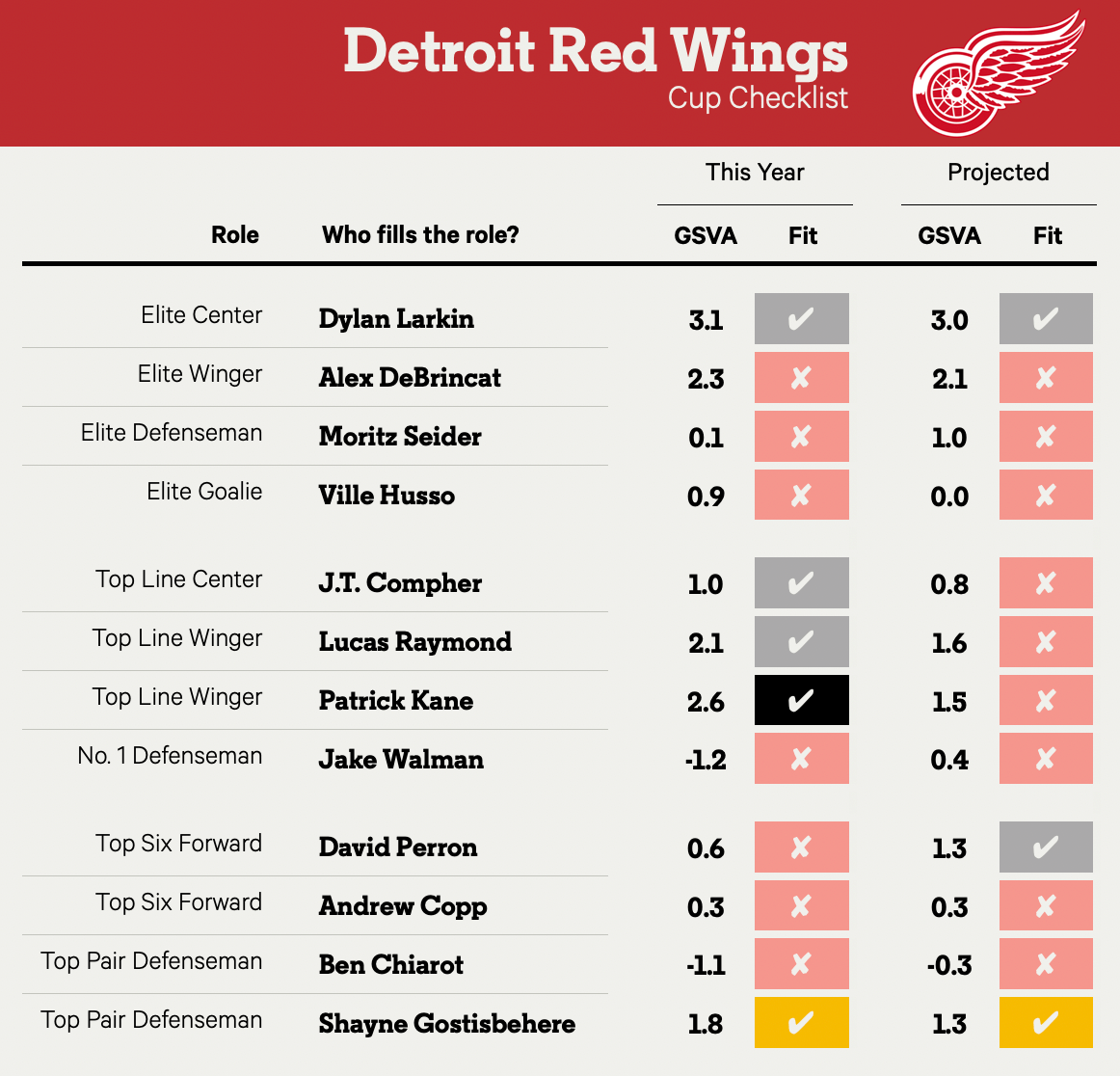
Pittsburgh Penguins
The Penguins are in a super tricky spot. The team may want to try contending while Sidney Crosby is still playing at an MVP-caliber level. But is running it back enough, especially now with a Jake Guentzel-sized hole at the top of the lineup?Knocking each forward down a slot would make a big difference; someone like Michael Bunting would be in a top-six capacity versus the top line. Drew O’Connor would slip off the list entirely. There would still be depth issues to solve considering what a black hole for scoring the bottom-six was all year. But reinforcements at the top of the lineup would have a trickle-down effect. A change in power play direction should help after this year’s surprising struggles.
That’s the optimistic view. But there are still gaps on the back end to solve, like getting Ryan Graves to bounce back from a disappointing first season in Pittsburgh.
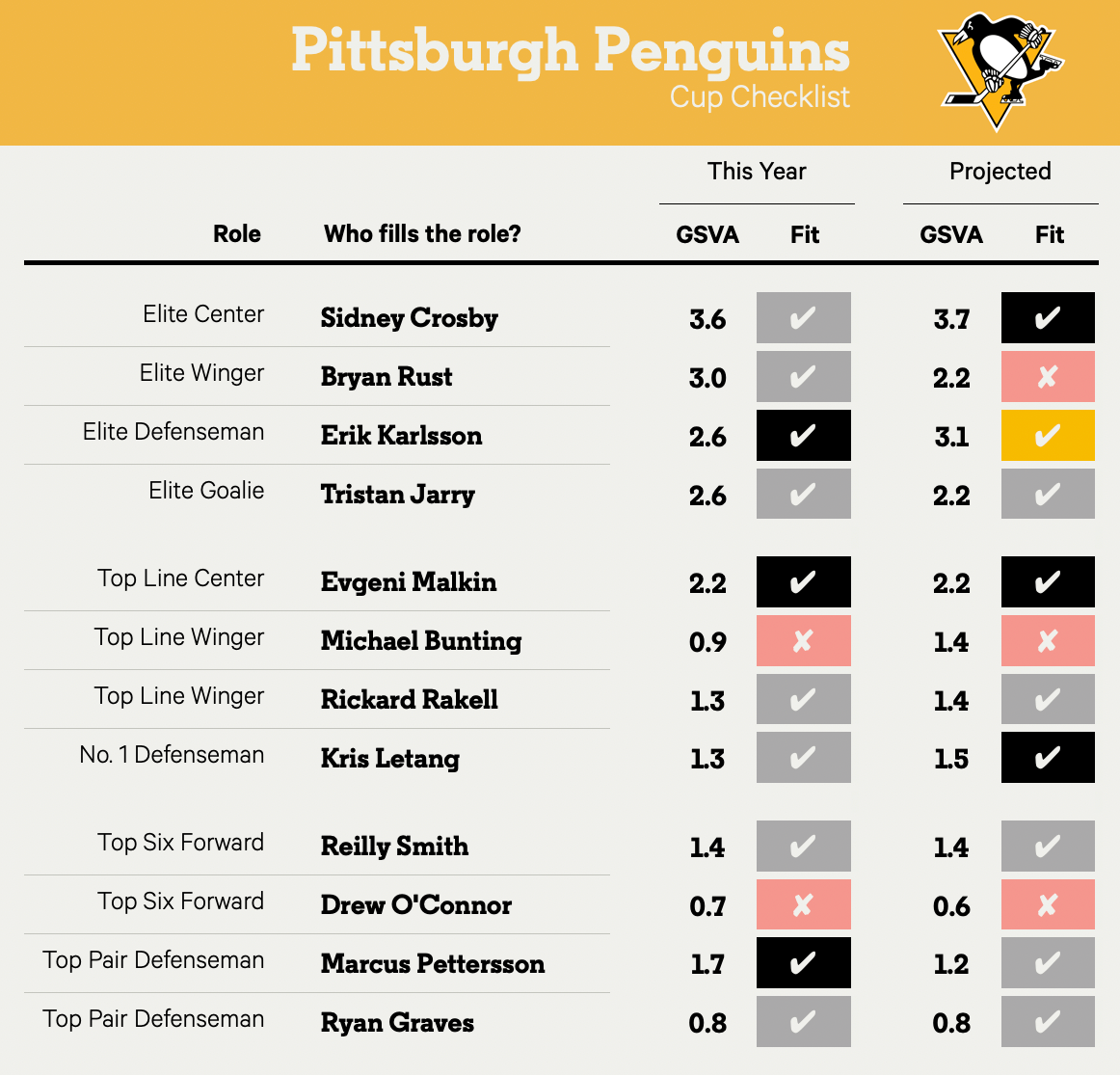
Philadelphia Flyers
The Flyers were one of the biggest surprises this season. Their output was greater than the sum of their parts, which pushed them to hold a playoff slot for much of the year. Sticking to the rebuilding plan and selling hurt in the short term but should pay off down the line.There are questions back in goal, like whether Samuel Ersson and Ivan Fedotov are ready to team up to play an 82-game season, or if the Flyers need more help between the pipes.
But another year of seasoning should benefit young talents like Morgan Frost, Cam York, Tyson Foerster and Noah Cates ahead. Plus there is the potential for players like Bobby Brink to become mainstays. The vision is coming together in Philadelphia and this year was a glimpse of what’s to come.

Buffalo Sabres
A year ago the Sabres looked like a team on the rise that just needed time to cook. But this year’s stumbles raised some red flags. There were individual and team-wide offensive struggles that held Buffalo back which led to a coaching change.There are some positives to build on — Ukko-Pekka Luukkonen was a difference-maker back in net and Devon Levi could be ready to split playing time after time with Rochester. Tage Thompson started to look like himself toward the end of the year. JJ Peterka emerged as a legit top-six forward and they’ll have more offensive reinforcements if Jack Quinn is healthy this year. Plus Bowen Byram should adjust to his new team and expanded role next year. Still, even if everyone gets back on track there could still be room for another difference-maker on the wing to take this team up a notch.

New Jersey Devils
Like the Sabres, the Devils have to hope that a new coach changes the vibes enough for a rebound. That should do wonders for someone like Timo Meier whose underperformance at times stemmed from usage. It could help Dawson Mercer get back to close 2022-23 breakout levels, too.Maybe coaching benefits John Marino, whose game was pretty unsteady this past season. The return of Dougie Hamilton should be a difference-maker, too. They may not play together, but his presence as the team’s No. 1 should keep everyone in more fitting roles and should elevate Jonas Siegenthaler’s game back up.
The elephant in the room is still goaltending, though. Jake Allen was a step up from what the team was working with, but he isn’t the bona fide starter this team needs. That is probably high on this offseason’s priority list.
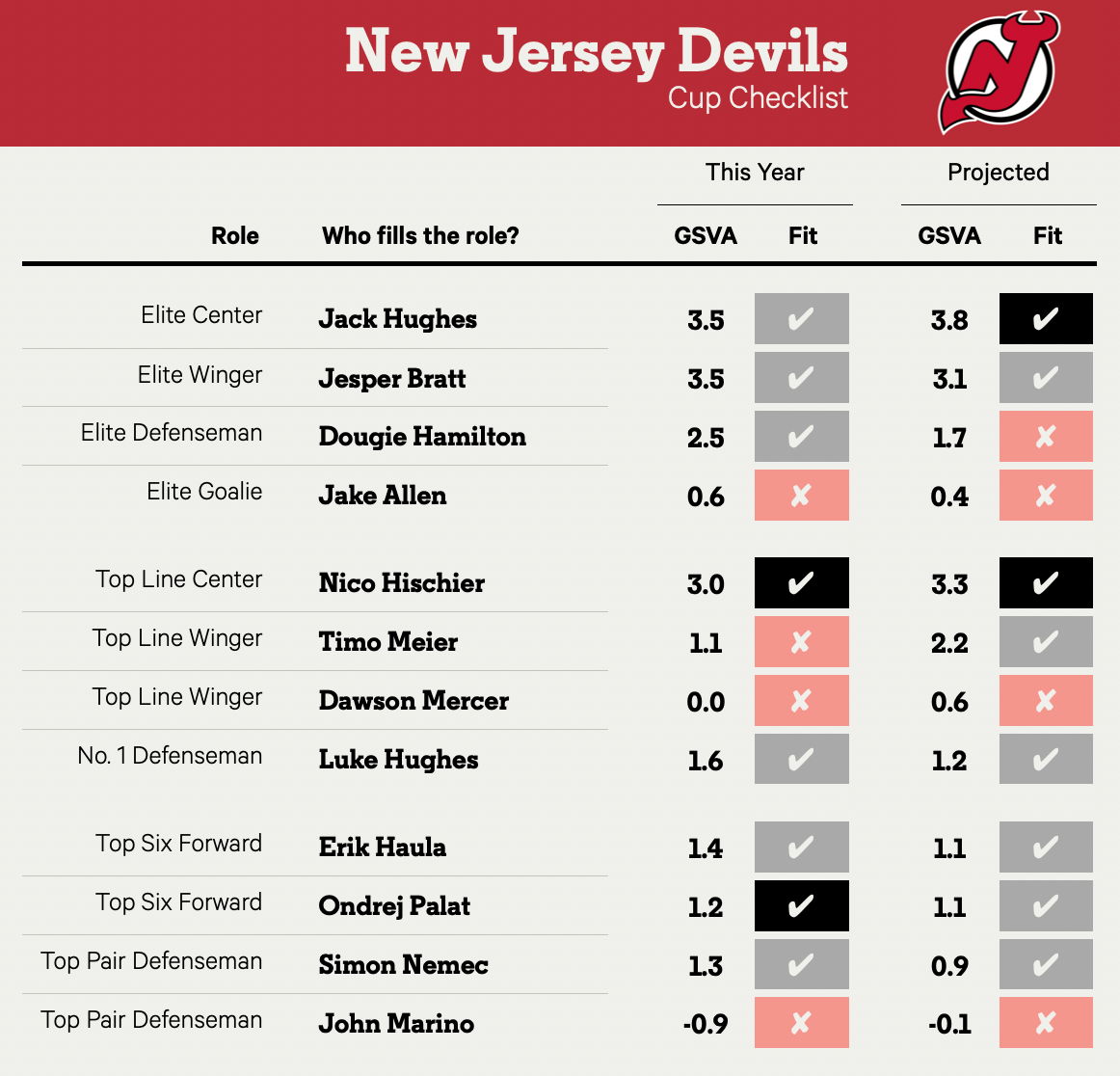
Ottawa Senators
We’re just going to down the coaching chain here. The Sabres hired Lindy Ruff, the Devils’ former coach this offseason. Travis Green, who took over for Ruff in New Jersey, will now be in Ottawa.So with the Senators, once again, the question is what impact a new coach will have on the team’s performance, and whether this will be the difference that pushes them forward.
Tim Stützle didn’t progress enough this year. Josh Norris couldn’t stay healthy. The Senators only had Shane Pinto for half a year (which may overemphasize his actual GSVA because it’s a smaller sample of play). And Jakob Chychrun failed to match expectations.
And then there’s the goaltending.
The Senators couldn’t buy a save from their goaltenders this year. It’s a big reason for their lowly finish, but it’s far from the only one.
The goaltending has to stabilize, but the team in front of the blue paint has to start taking bigger steps forward. Brady Tkachuk, Jake Sanderson and Artem Zub did this last year, but the rest of the lineup now has to follow.

Montreal Canadiens
On the surface, the checklist may not look like there is anything special in Montreal. But the potential and progress is there. The goaltending shined after Allen was traded, ending a three-goalie situation. Nick Suzuki emerged this season as a real difference-maker with Cole Caufield and Juraj Slafkovský, putting together what could be the Canadiens’ first line for years to come. Plus there are some exciting up-and-coming defenders like Kaiden Guhle, Justin Barron, Jordan Harris and Lane Hutson to keep an eye on.The Canadiens could still use some oomph up front. Management can trade some of the prospects and picks accumulated over the years to change that, similar to the Alex Newhook trade last summer. But even with an addition or two, Montreal still needs time. The Canadiens are in the thick of the developmental process which can be the toughest part of it all. It’s a slow build, but the direction behind it seems pretty strong.

Columbus Blue Jackets
The Blue Jackets aren’t just some rebuilding team, management signed contracts over the last few years intending to be a playoff team.Johnny Gaudreau hasn’t lived up to expectations. Damon Severson and Ivan Provorov haven’t exactly impressed, either. Injuries have been crushing over the last few years and coaching has been more complicated than necessary.
To move forward, the first task will be hiring a new general manager. Then comes the challenge of navigating back to contention. Every position needs work — the goaltending is unstable, the defense is lackluster below Zach Werenski and the center depth is thin. The latter at least has some upside with Adam Fantilli, Cole Sillinger and Kent Johnson. When they’re ready, it’ll knock Boone Jenner into a more fitting role.
Having that young talent and helping them reach the best version of themselves are two completely different challenges, though.

— Data via Dom Luszczyszyn, Evolving-Hockey and CapFriendly. This story relies on shot-based metrics; here is a primer on these numbers.
